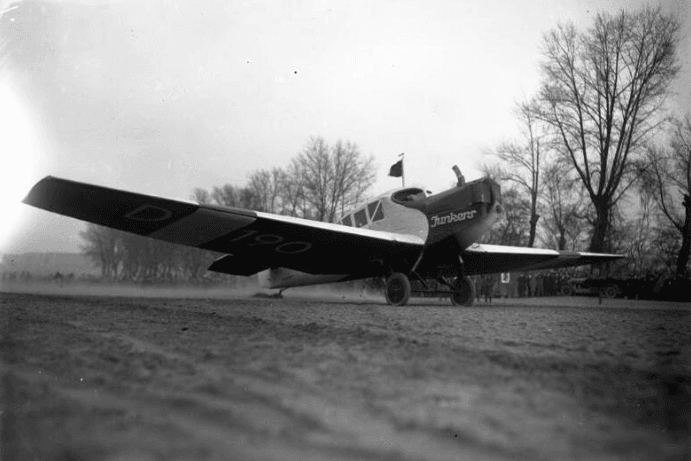Time Machine: The Luna 9 Soft Landing on the Moon
February 3, 1966 – On this day, the Soviet Union’s Luna 9 spacecraft became the first human-made object to achieve a soft landing on the Moon. This Soviet spacecraft landed near the edge of a 25-meter-wide crater, resting at a slight tilt of about 15 degrees. The landmark mission marked a crucial step in the space race, proving that a controlled landing on another celestial body was possible and laying the groundwork for future lunar exploration.
Luna 9 was part of the Soviet Union’s Luna program. The spacecraft comprised two parts. It had a total weight of 1538 kg and stood 2.7 meters tall. Launched on January 31, 1966, Luna 9 was an ambitious series of missions aimed at exploring the Moon. After a journey of approximately three days, the probe successfully landed in Oceanus Procellarum, a vast lunar mare on the Moon’s surface.
The most groundbreaking achievement of Luna 9 was its ability to transmit images from the lunar surface. On February 4, it captured its first panoramic images with the Sun just 7 degrees above the horizon. As the loose lunar soil settled, the probe shifted, increasing its tilt to 22.5 degrees before capturing a second panorama. Over the next two days, Luna 9 took two more panoramic images, one on February 5 and another on February 6.
These images confirmed that the lunar surface was solid enough to support landers and astronauts. The images included views of nearby rocks and a distant horizon 1.4 km away. The probe also measured radiation levels, reporting about 30 millirads per day. The mission ended on February 6, when the probe’s batteries ran out of power. These images confirmed that the lunar surface was solid enough to support landers and astronauts.
Time Machine: The Launch of ESSA-1
On February 3, 1966 – On this day, the United States launched ESSA-1, the first satellite of the Environmental Science Services Administration (ESSA). This remarkable milestone marked a significant advancement in meteorological observation. ESSA-1 was designed to capture and record daytime cloud cover images. It provides valuable data for weather analysis and forecasting.
ESSA-1 was a spin-stabilized satellite. It featured an 18-sided right prism structure, measuring approximately 107 centimeters across and 56 centimeters in height. This revolutionary satellite’s launch mass is about 304 kilograms. It operated in a near-polar orbit, completing one orbit every 100 minutes, with an inclination of 97.91°.
This US weather observation satellite was equipped with the Advanced Vidicon Camera System (AVCS). It had two 500-scan line TV cameras with 1.27 cm vidicons. This system enabled the satellite to capture cloud cover images. The system recorded these images onboard and later transmitted them to ground stations for analysis.
The satellite performed phenomenally well after launch till the camera system failed on October 6, 1966. The space research team kept the spacecraft on for an additional period for engineering purposes and deactivated it on May 8, 1967.
For those who dream of traveling in a time machine, Big Moves’ exciting new scientific history series Big Chronicles is here. Buckle up, we will take you on a thrilling ride through the most fascinating moments in history.
Birth and Remarkable Achievements of “Hugo Junkers”
Hugo Junkers was born on February 3, 1859. He was a renowned German engineer and aircraft designer. Junkers significantly influenced aviation with his innovative designs and engineering achievements. Junkers pursued engineering studies at the Technical University of Berlin (Technische Universität Berlin) and RWTH Aachen University.
The aviation engineer founded Junkers and Company in 1895. This company initially focused on manufacturing boilers, radiators, and water heaters. Junkers’ interest in aviation led him to patent a flying-wing design in 1910.
Junkers J-1: Junkers introduced Junkers J-1 also known as the Blechesel. The J-1 earned the nickname “Tin Donkey” or “Sheet Metal Donkey.” Its design marked a significant advancement in aircraft design and it was the world’s first successful all-metal monoplane.
Junker F-13: Junkers designed and developed Junkers F-13 towards the end of World War 1. He first flew F-13 in 1919. This revolutionary flight celebrated an achievement as the world’s first all-metal passenger aircraft.
Junkers W33: Junkers & Co. developed Junkers W33, this monoplane was introduced in 1920. The W33 flight gained historical significance on August 12, 1927, when it became the first aircraft to complete a non-stop east-to-west transatlantic flight.
Junkers G.38: The Hugo Junkers designed and developed Junkers G.38. This massive German four-engine transport aircraft first flew in 1929. Junkers & Co developed two prototypes of the Junkers G.38. These aircraft flew as commercial transport within Europe.

